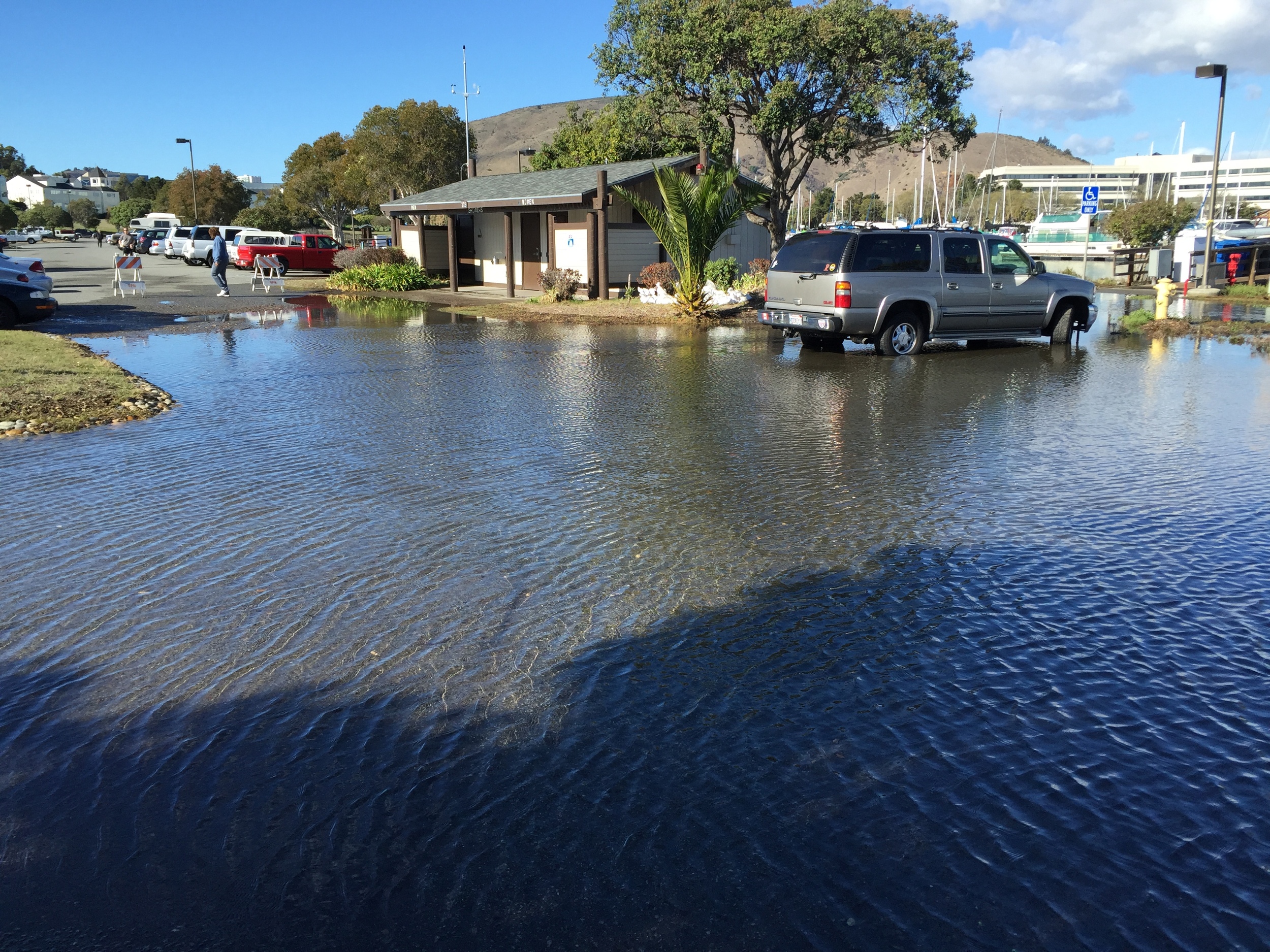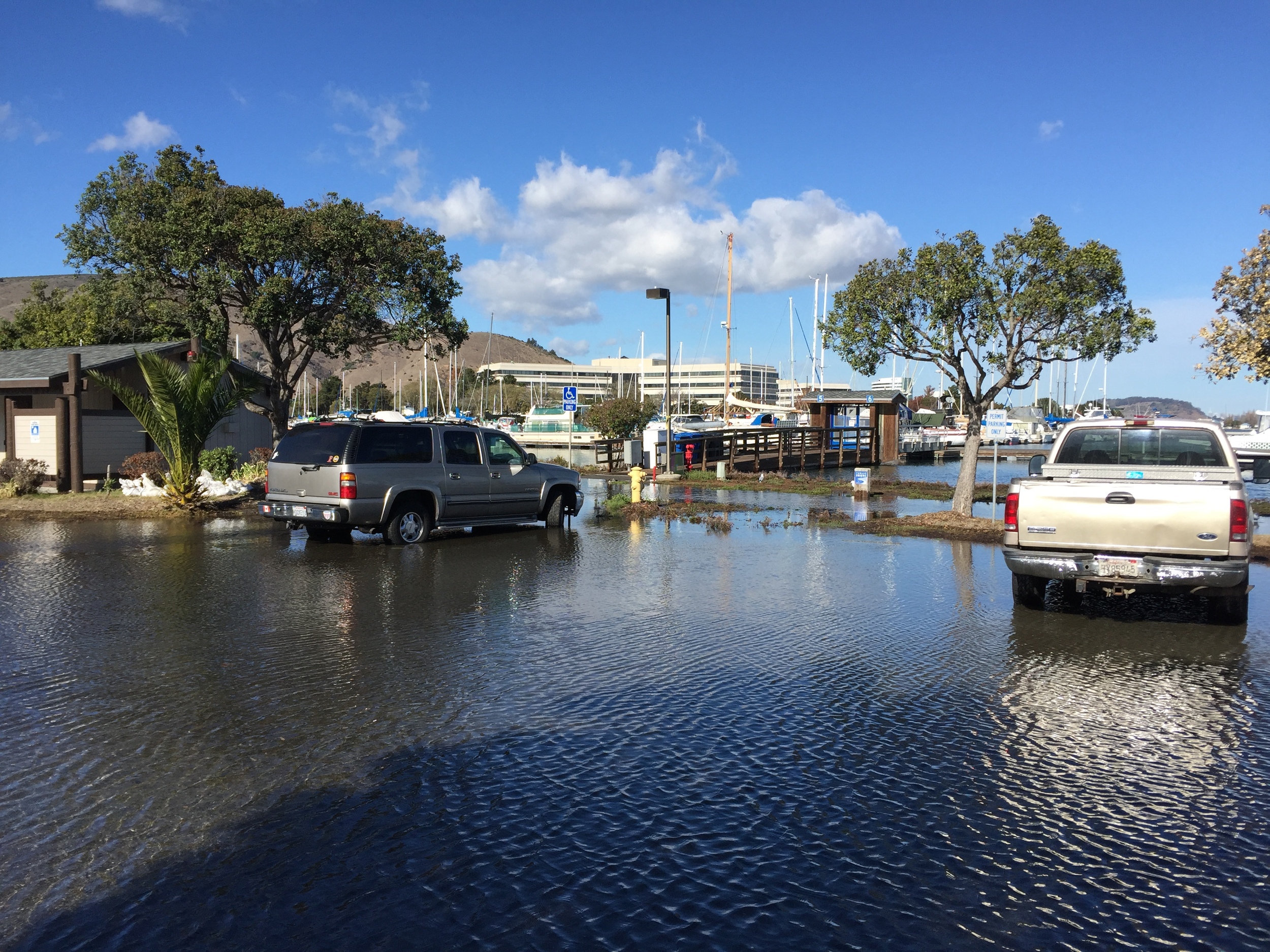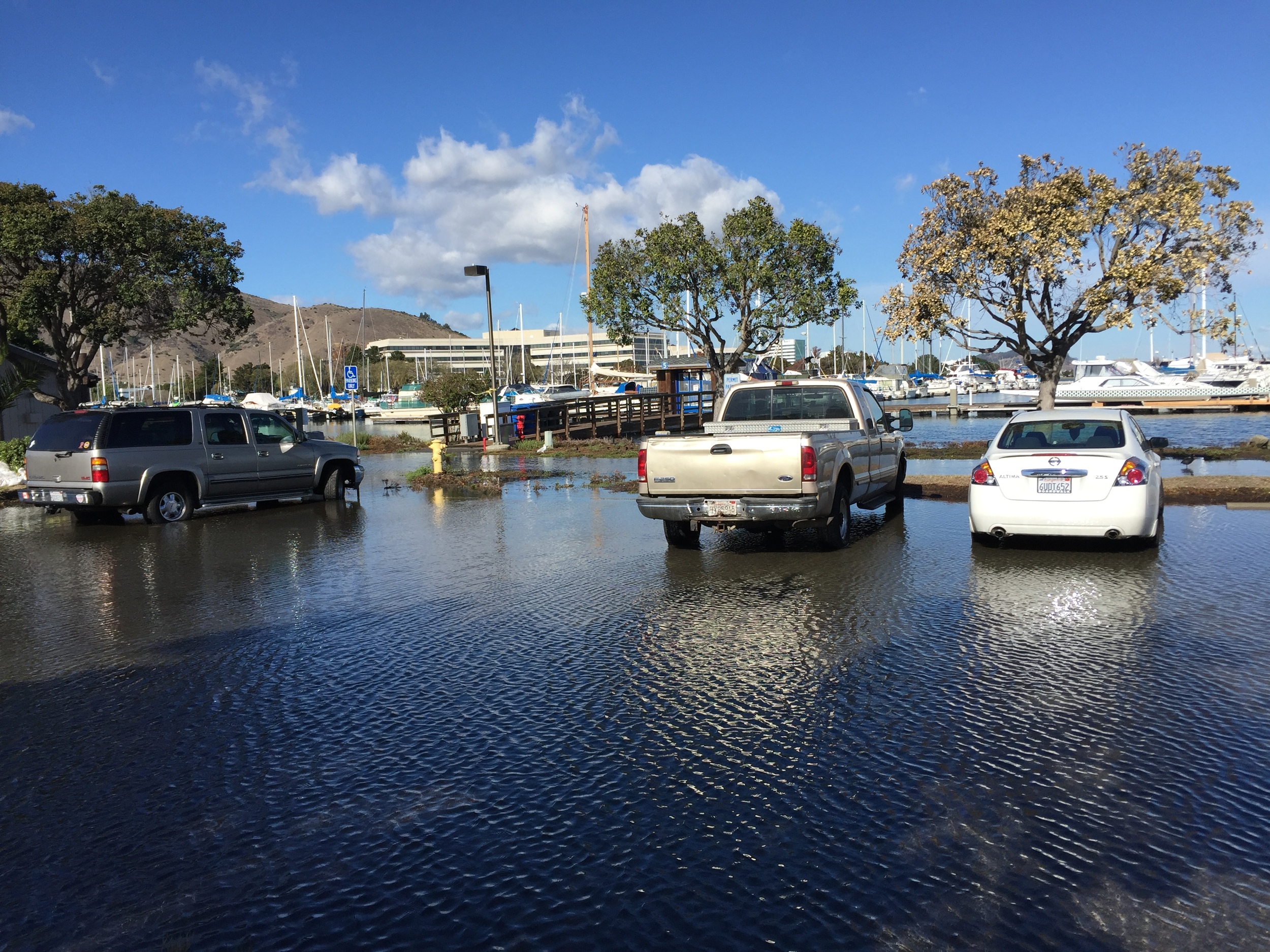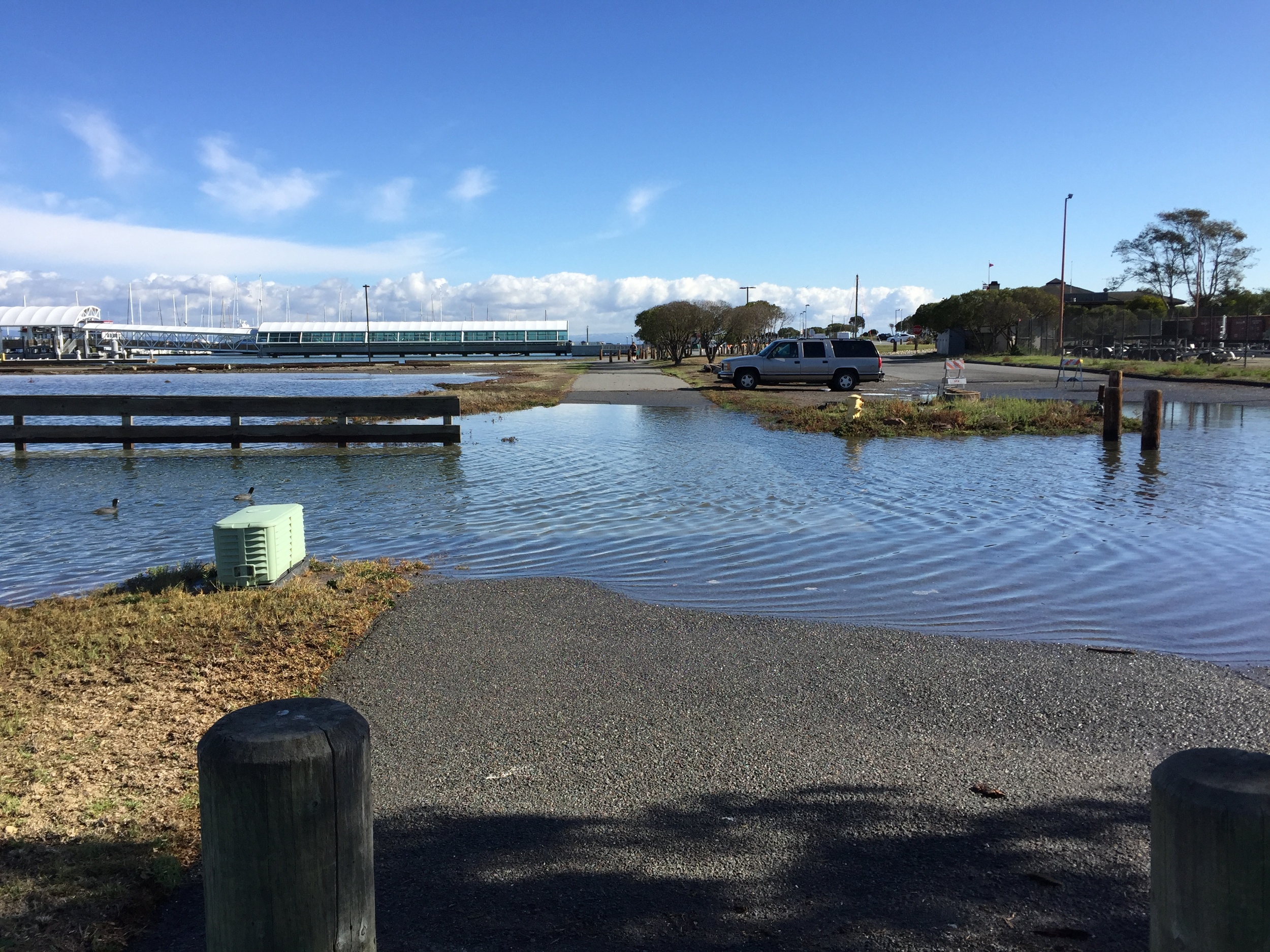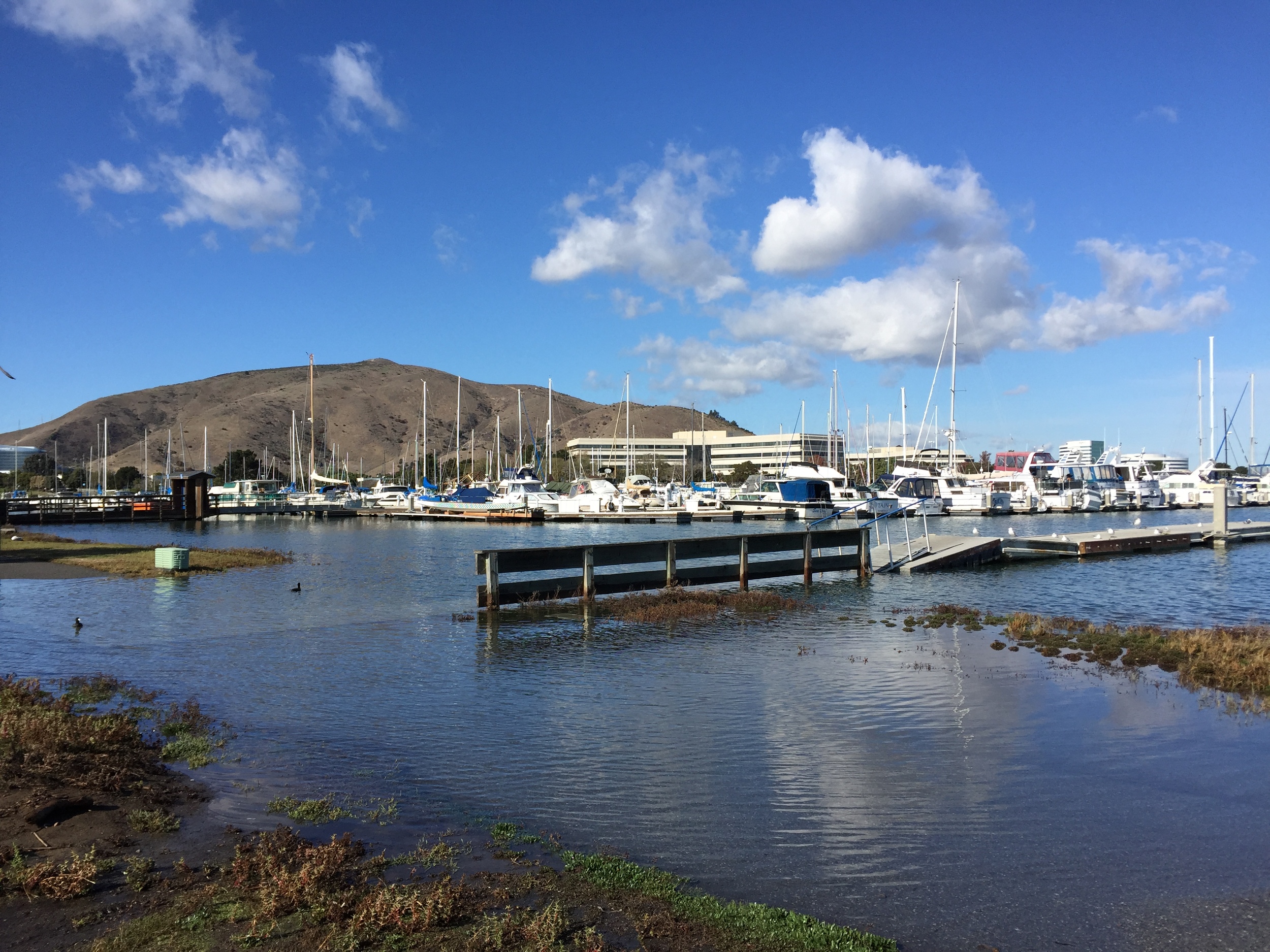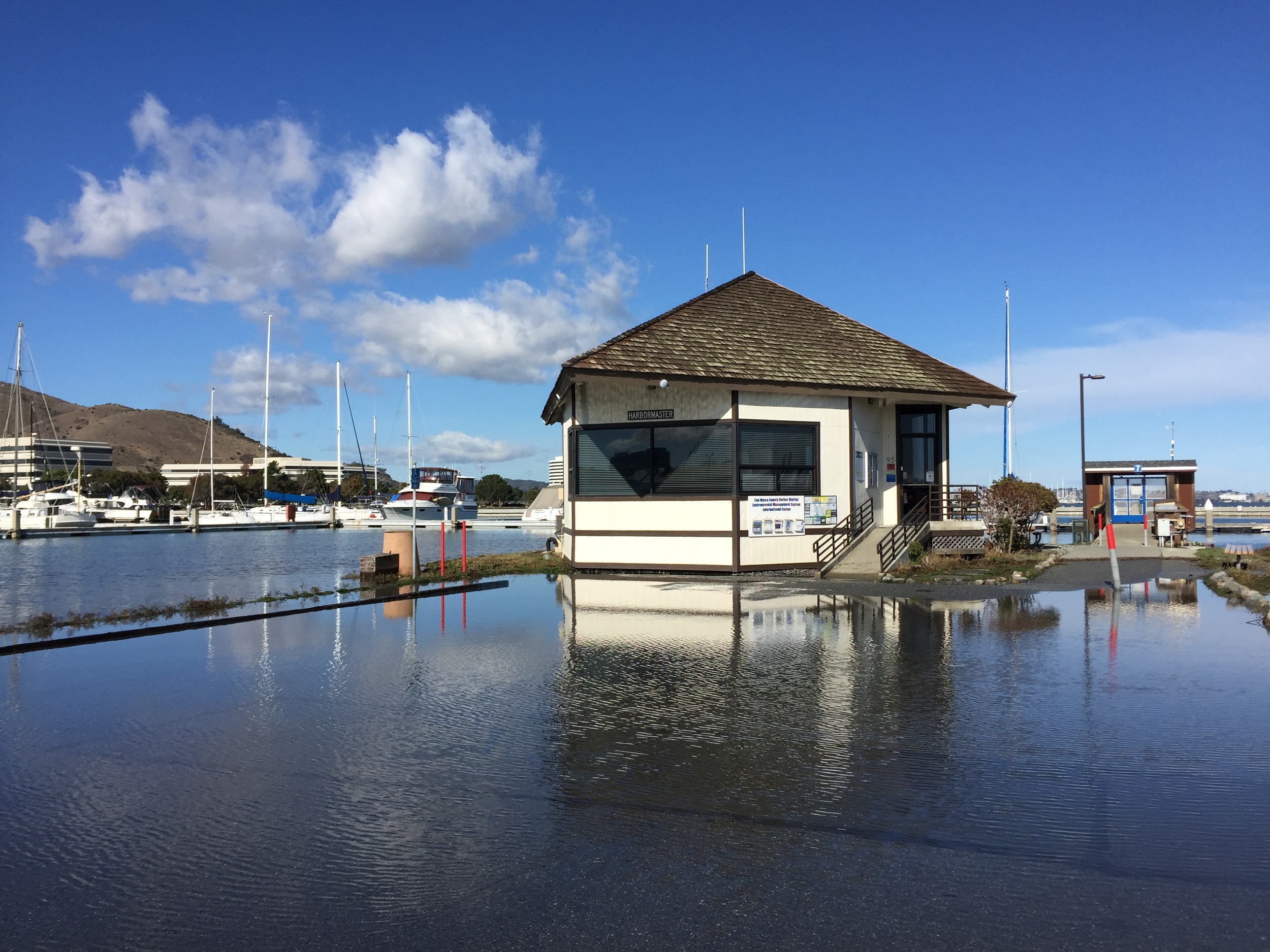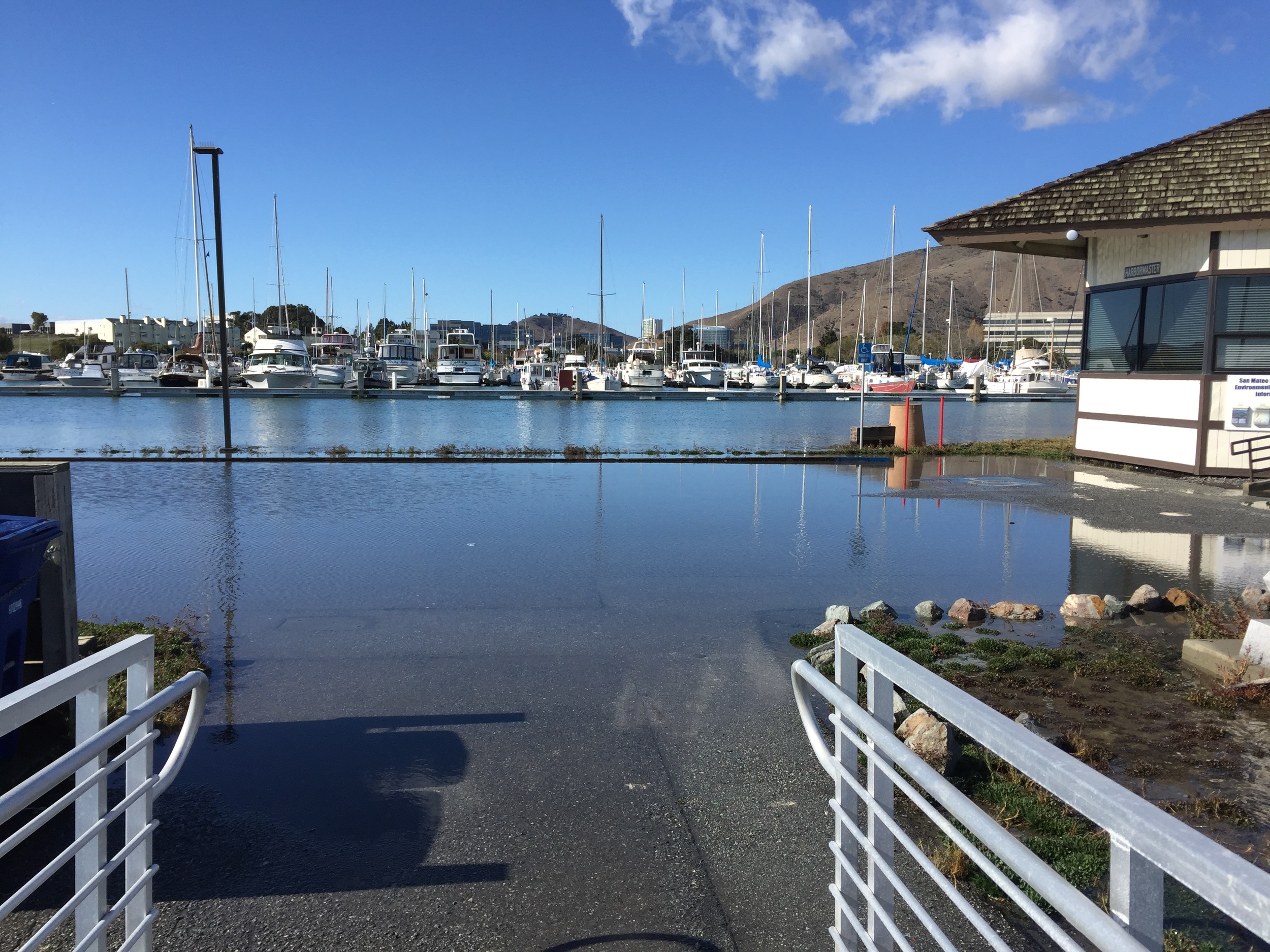Oyster Point Marina is result of Bay fill dump era
Trash Dumps and the Hidden History of the Bay Shoreline
First there were marshes; then there were dumps. The dumps were eventually turned into regulated landfills, and the landfills into shoreline parks.
The Oyster Point Landfill is a closed, unlined Class III landfill that was in operation from 1956 to 1970. Prior to 1956, what would become the Oyster Point Landfill area consisted of tidal marshlands and upland soils and bedrock.
Between 1956 and 1970, the City of South San Francisco leased the site (approximately 57 acres) to South San Francisco Scavenger Company.
In 1956, Scavenger began disposal operations at the landfill. Initially, municipal solid waste was disposed of on the ground and burned. This activity ended in 1957 following the enactment of laws prohibiting open air burning of rubbish in the Bay Area. To address the new air quality restrictions South City and Scavenger established a solid waste disposal site on the submerged lands just east of the original Oyster Point.
The landfill was developed in three phases. Filling of the first section began in 1957 and was completed by late 1961. The first area to be filled extended into the Bay about 1,500 feet eastward from the original bluff. Scavenger placed waste directly into the tidelands and used a wire fence to control the discharge of solids into the Bay due to tidal action. Waste disposal operations eventually resulted in the relocation of the shoreline approximately 3,000 feet to the east of the pre-landfill shoreline.
The landfill material consists of up to 45 feet of poorly compacted municipal and industrial waste. Typical waste found within the landfill includes the following: chemicals, drums, paper, cardboard, organic matter, wood, glass, metal, rubber, rocks, concrete, and other materials. The base of the landfill material has been compressed into, and mixed with, the upper part of the Bay Mud. The volume of waste in the landfill is approximately 2.5 million cubic yards and total tonnage of this material is approximately 1.4 million tons. This volume of waste would cover a football field almost to the height of the Empire State Building.
Beginning in 1961, the landfill received liquid industrial waste for disposal. The types of liquid waste included paints, thinners, and coagulated solvent sludge. The liquid wastes were placed in a sump (Sump 1). No records describing the construction of the sump have been found. Liquid industrial wastes were disposed of in this sump from 1961 until 1966. In July 1966, the City of South San Francisco discontinued the use of Sump 1 and used Sump 2 until 1967. The total volume of liquid industrial waste received by the landfill in 1965 and 1966 is estimated at 608,351 and 378,680 gallons, respectively. Sump 1 alone is almost enough to fill an Olympic-size swimming pool.
Consistent with landfill practices at that time, no liner was installed at the site. Waste disposal design features such as liners, cellular division of waste, and leachate collection systems were not installed. Instead, the waste materials were placed directly onto the Bay Mud and soils overlying bedrock. In order to contain the solid waste from contact with waters of the State, Bay Mud berms were constructed around portions of the waste disposal areas in 1961, 1962, and 1964. However, there is no data to suggest that the industrial waste sumps were ever constructed with additional berms or dikes to control the migration of liquid wastes.
In 1962, a small craft harbor was constructed along the north shore of the landfill. To create a breakwater for the east side of the marina, the second phase of landfill was placed in the form of a mole extending from the eastern end of the first fill and north about 400 feet into the Bay. The third phase of filling began in 1964 and was accomplished by dredging up Bay Mud and forming mud dikes and a dike-enclosed cell in which solid waste was later placed.
Upon completion of the disposal operations, various landfill closure activities took place through the late 1980s. The closed landfill then became the site for development of the Oyster Point Marina/Park.
The landfill is currently owned by the City of South San Francisco and is operated as a marina, ferry terminal, yacht club, hotel, office space, and open space. South City is responsible for landfill maintenance and the San Mateo County Harbor District manages marina operations pursuant to a Joint Powers Agreement that terminates in 2026.
South City hopes to redevelop the site. The 2015 Semiannual Oyster Point Landfill Report states that a project would include excavation of landfill materials at the former Oyster Point Landfill and relocation of these materials on- and/or off-site. The landfill cap would be upgraded to meet the current requirements of Title 27 of the California Code of Regulations with the approval of the Regional Water Quality Control Board and San Mateo County Environmental Health Division.
The first phase of redevelopment plans call for up to 600,000 square feet of office/R&D space, envisioned as a biotech campus, and possibly a retail/restaurant building, in the area currently occupied by the existing commercial development at the eastern side of the landfill site. Phase I also includes the reconfiguration of Marina Boulevard and a portion of Oyster Point Boulevard, and a shuttle turn-around will be constructed adjacent to the Ferry Terminal. Parcels to the east of the new development will be graded and improved as sports fields. Further east a future hotel and retail complex is envisioned. The existing Yacht Club structure and the Harbor District maintenance building would remain.
Where is the wisdom in developing such a risky site? Health, safety, and public access concerns include flooding from landfill subsidence and sea-level rise, Bay saltwater breaching the landfill cap, underground electrical saltwater intrusion, gas explosions, and liquefaction.
On Dec. 9, 2015, Bruce H. Wolfe, Executive Officer of the San Francisco Bay Regional Water Quality Control Board sent the City of South San Francisco an enforcement letter regarding recurrent flooding overtopping the landfill cap. The San Francisco Regional Water Quality Control Board, San Mateo County Division of Environmental Health, and Bay Area Air Quality Management District are the agencies that regulate the landfill.
Refer to the following documents for more info:
2000 Water Quality Control Board Updated Waste Discharge Requirements
2010 Hazardous Materials, Oyster Point Specific Plan & Phase 1 Project
Jan 30, 2016 — The SMC Office of Sustainability removed Oyster Point Landfill from the list of recommended assets. The change was disclosed at the County’s SeaChange Open House at Genentech in South San Francisco. The City of South San Francisco informed the County that they would prefer Oyster Point Landfill not be included in the Army Corps of Engineers funded SLR Vulnerability Assessment. The County responded by removing Oyster Point Landfill and replacing it with a landfill located in Half Moon Bay approximately 100 feet above the ocean.
Feb 26, 2016 — City of South San Francisco short-term plan for mitigating flooding at Oyster Point Marina caused by landfill subsidence and sea level rise. See Figure 5 in the Report. It appears that sea-level rise projections have not been calculated or included in the topographical mapping yet.
Oyster Point Landfill, City of South San Francisco, Requirement for Submittal of Technical Reports Pursuant to Water Code Section 13267
King Tide flooding at Oyster Point Marina—Wed., Nov. 25, 2015
The Tale of the Missing Harbor Servers
This is a first draft. For the final report click here.
Less than one month after being sworn-in commissioner Mattusch inquired about two handwritten checks listed in the Feb. 4 meeting packet. IT/HR director Marietta Harris explained that the checks totaling $19,075 were for new “routers” (firewalls).
I requested follow up information because the board had not approved the purchase. Marietta emailed two requisition forms on Feb. 10. Palo Alto Networks firewalls, software, and support subscriptions were split on the requisition forms to avoid the spending limit. Acting general manager Scott Grindy and Marietta's signatures were on both.
I also noticed that the forms listed three servers however the words "server" were scribbled out and replaced with the handwritten word “firewall.” This piqued my curiosity so I asked why servers had originally been typed on the forms. I was told it was a typo and that we had previously purchased servers from the same vendor.
I requested the firewall invoice and Marietta emailed, “We paid from the quote because we were all in the office discussing what we needed and the quote and in order to get the discount we wanted to act fast.” It occurred to me that the staff might have asked the IT vendor to split the project on two quotes to avoid the required board authorization on purchases above $15,000.
Two weeks after commissioner Mattusch's question about the $19,075 payment Marietta surprised the board by announcing she was resigning at the Feb. 18, 2015 meeting.
Cause for Concern
On March 30, 2015, I phoned Scott Grindy and expressed concern about a meeting held while he was away. I had observed finance director Debra Galarza sharing a draft staff report with a vendor. I was concerned because the vendor had not yet submitted an estimate to the District and the draft included a $47,000 purchase request.
I asked Scott if he thought tempting a service provider with an inflated budget number in advance of receiving an estimate was prudent. Scott said, “It’s not unusual.”
On May 11, 2015, I followed up with an email to district counsel, interim General Manager Glenn Lazof and commissioner Mattusch. My email said:
On Monday, March 23, 2015, Debra Galarza emailed me and requested a meeting at the 504 Avenue Alhambra building in El Granada. She needed access to the new office space so she could meet with the Well Connected Office (IT vendor) while they performed a site visit in advance of providing the District with an estimate. At the time Debra was acting as General Manager while Scott was away at the Port Captains Conference.
I emailed Randy Kinghorn (the District’s realtor) and asked him to open the building. Randy, Steve Almes, Steve’s employee, Debra and I met at the District’s new headquarters. Steve and his employee checked phone jacks and server rooms, Randy and I looked at the public meeting room related to a new wall that would be installed by the building owner as part of the lease agreement.
Randy left and I waited in the conference room for Steve and Debra to finish. I was writing email on my cell phone when they joined me. Steve and his employee discussed some of the IT possibilities, overall Steve said the building would not require much work because it was set up well from an IT perspective.
Debra handed Steve a draft staff report for the upcoming April 1st meeting and asked Steve if everything looked okay. I asked if I could take a look at the draft. I noticed that $47,000 was recommended for IT services related to moving the District’s headquarters from South San Francisco to El Granada.
Servergate
At the April 1, 2015, board meeting I opposed a motion by commissioner David to hire the Well Connected Office for IT related moving costs. A few days later I learned that the District was not in possession of servers purchased in 2012 from the Well Connected Office. I alerted counsel about the missing servers.
On April 5, 2015, Steve Almes owner of the Well Connected Office informed Scott Grindy that he no longer wished to work for the District.
By reading past agendas and board packets I was able to confirm that the Board approved spending up to $40,000 on IT equipment on May, 16, 2012. John Ullom confirmed via PRA request that the District paid the IT contractor $34,689.31 for servers (check #040875) on May 31, 2012.
On May 18, 2015, deputy secretary Debbie Nixon provided a formal response letter to a PRA requests I made in March and April. The letter stated, “Yes, the equipment was delivered to the District. We assume the equipment was installed.” This was odd because the servers had still not been located. At the time I wondered if they might have been recycled or stolen. I did not respond to Debbie’s email and I later learned the custom servers were never actually built or delivered.
The next day on May 19th, Glenn Lazof sent a memo to District staff that said, “Effective immediately I am directing all staff and contractors to cease any professional contact with Commissioner Brennan, other than at Public Meetings, or as explicitly approved by me or an authorized designee.” On the same day Lazof also sent a bizarre memo to the board accusing me of harassing him during a phone conversation. I believe Lazof’s untrue allegations were intended to tarnish my credibility. And his memo to staff was intended to ostracize me and interfere with my ability to do my job by treating me differently than the other commissioners.
Bernardo Shoots the Messenger
Commissioner Bernardo was incensed by the suggestion that our management staff had paid for equipment that was missing and possibly never delivered. He was the board Treasurer in 2012 and it was his job to review and approve bills in advance of payment.
On May 26, 2015, commissioner Bernardo said that I should be removed as board president because I made false allegations against our IT consultant. Bernardo also said, “There is no fraud, there is no theft, no criminality whatsoever.” And he went one step further to suggest that my concerns could have resulted in a lawsuit against the District.
Two Refunds
On August 8, 2015, the Harbor District received a long overdue $34,689.31 refund for servers that were paid for in 2012 but never delivered.
At the Sept. 2, 2015 Harbor District meeting Marcia Schnapp, a past finance director and current interim administrative manager confirmed that the District had received a refund for the firewalls ($19,075) less a 7% restocking fee. During the meeting I requested a copy of the refund check to verify the amount, hopefully I will receive it soon.
To-date the total refund for the firewalls and servers is $52,429.06.
The Sept. 2, 2015 staff report disclosed that IT vendor Steve Almes said that Marietta Harris told him to issue invoices for equipment he had not delivered. During the meeting Glenn Lazof said that staff had not been following the District’s purchasing policies and he detailed a number of accounting errors that were still being resolved. He said that multiple estimates should be requested for equipment and that consultants should be prohibited from purchasing equipment on behalf of the District except in an emergency.
Conclusion
Harbor District general manager Peter Grenell announced his retirement at the Sept. 4, 2014, board meeting. Grenell's last day was Dec. 31, 2014. He managed the district for 17 and a 1/2 years.
The District’s IT and human resources director Marietta Harris announced her resignation at the Feb. 18, 2015 board meeting.
I’m currently serving a four-year term as a Harbor Commissioner that ends in 2016. I resigned as board president at the May 26, 2015 board meeting.
The District’s finance director Debra Galarza signed a six figure settlement agreement on Sept. 4, 2015, and resigned effective immediately. Galarza threatened but never actually filed a lawsuit against the Harbor District. She did however have a history of numerous complaints against the district that predate my time on the board. It's been alleged online that commissioner Jim Tucker told Galarza to file a tort claim against the district in 2014. A contractor is currently filling in as finance director.
The District's deputy secretary Debbie Nixon's last day will be Sept. 25, 2015. A temporary employee has been trained to cover the position and will be filling in.
The District has a new IT vendor.


